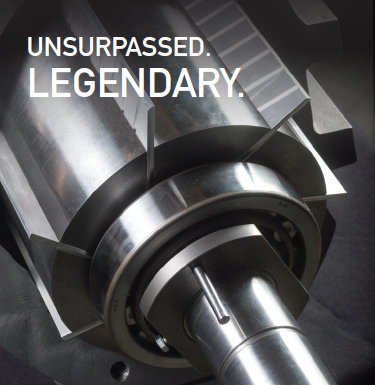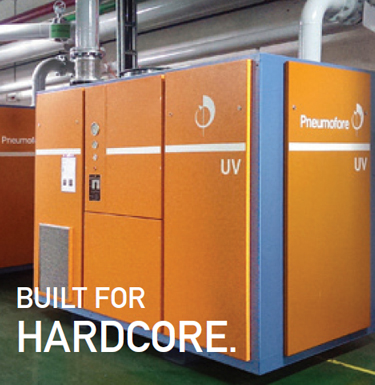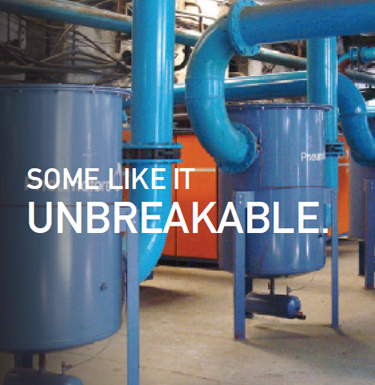Sustainability
Today, many inkjet printers cost less than their cartridges, and within a few years they will end up buried in a landfill or polluting the atmosphere as toxic smoke. Industrial equipment is increasingly designed and produced the same way: as a disposable commodity. The user buys a cheap machine, but then overspends on everything else: assembly, power usage, parts, service, waste byproducts. When it breaks, it is thrown away because it was designed to be unfixable within reasonable cost. A cheaper machine is available in the meantime – one even more compromised in quality. Who will clean up the mess and pay for the damage?
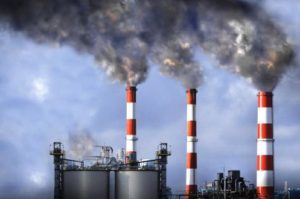 Pneumofore stands for exactly the opposite approach. Since 1923, it has manufactured more than 40.000 air compressors and vacuum pumps designed to operate for decades, to use less energy than other machines, and to be transparent for the owner. After several hundreds of thousands of hours running at their first site, Pneumofore units usually come back to their factory, where they are easily overhauled for re-use. Others are resold across the world by traders on the second-hand market. Pneumofore machines new and old are especially desirable in more remote areas with harsher conditions, where independent users value their sturdiness, ease of repair, ease of integration, low maintenance, and continuous efficiency.
Pneumofore stands for exactly the opposite approach. Since 1923, it has manufactured more than 40.000 air compressors and vacuum pumps designed to operate for decades, to use less energy than other machines, and to be transparent for the owner. After several hundreds of thousands of hours running at their first site, Pneumofore units usually come back to their factory, where they are easily overhauled for re-use. Others are resold across the world by traders on the second-hand market. Pneumofore machines new and old are especially desirable in more remote areas with harsher conditions, where independent users value their sturdiness, ease of repair, ease of integration, low maintenance, and continuous efficiency.
Pneumofore has constantly maintained the core value of its founding generation: respect. Literally, “respect” means looking back and taking into account one’s position vis-a-vis someone or something else. In this context, it means defending better technology, replenishing the resources that are consumed, reducing environmental impact, and leaving a better place for those who will come after. Pneumofore manifests this respect by building durable and reliable machines that result in a far smaller carbon footprint than the industry standard.
First, Pneumofore designs its systems without obsolescence: nearly every non-consumable part is engineered to outlast a generation. Placing a long-lived machine in service saves energy and reduces waste by eliminating the entire environmental impact of a replacement: disposal of the old, production of the new, and transportation of both. Further, by not breaking down, reliable equipment benefits not only the owner, but also saves energy otherwise spent on moving technicians or parts, or the whole machine, even.
More importantly, Pneumofore compressors and pumps use only a fraction of the operating energy consumed by most competing machines. Generally, the cost of adsorbed power throughout a compressor or pump’s operating life is in the order of 5-10 times the equipment purchase price and makes up 60-80% of the total life cycle cost. With Pneumofore systems, the slightly higher purchase price is recuperated multiple times within the first decade through energy savings alone.
A typical scenario: to supply its glass moulding machines with vacuum, a mid-size hollow glass plant has used one 90 kW liquid ring pump (LRP) with a chiller and additional circulating pumps for water cooling. After ten years, this system has come to its functional end as a result of fatal wear and tear on its many components. Over the course of its operation, the LRP has consumed close to 7620 mWh, caused 10 system flushes, and contaminated over 250.000 liters of water. Now, one air-cooled 75 kW Pneumofore rotary vane vacuum pump is dropped in, to do the same job. Over the course of 10 years, it will consume around 30% less energy, use no water, require an oil change once a year (140 liters total) and perhaps a one-time routine service inspection. The operational savings alone are on the order of 5,4 times the cost of purchasing the system. The ROI is below 19 months. The emissions savings on CO2 are close to 1.140.000 Kg. In a similar instance, another glass plant replaces three 60 kW liquid ring pumps with two air-cooled 75 kW Pneumofore rotary vane vacuum pumps that consume around 40% less energy and save around 3.360.000 Kg of CO2 emissions. Both plants can continue in this manner with the same Pneumofore units for several more ten-year cycles. Far down the line, they may each need 2 new bearings and a few other minor parts.
The key to this efficiency is Pneumofore’s core technology, the rotary vane air end, which has been continuously improved through R&D and engineering over nearly a century of applied experience. The high compression ratio of the rotary vane principle and direct-coupling to the motor use far less operating energy than most other compressor and pump designs, such as screw, piston, or liquid ring.
Other Pneumofore innovations further boost energy efficiency, like the intensive oil injection and tangential vanes. By using air cooling through vertical radiators instead of water cooling, Pneumofore machines eliminate not only the extra power use of water circulation, but also the consumption or contamination of water, which may in turn cost further energy for disposal or cleanup.
The high durability of rotary vane machines also results from the simplicity of this design. The air end itself and the axial layout have few moving parts and turn at relatively low rotation speeds, compared to 3-4x higher with rotary screw units. Low speed keeps friction, vibration, and temperature low throughout the system, which means less cooling and less material degradation or stress.
Pneumofore’s environmentally friendly stance is also reflected by its turnkey delivery. Encased in a sound-proof cabin with a compact footprint and all components on board, the units are shipped ready-to-use, require no foundations, and lend themselves well to heat recovery. Their ease of operation and low maintenance additionally relieves plant personnel.
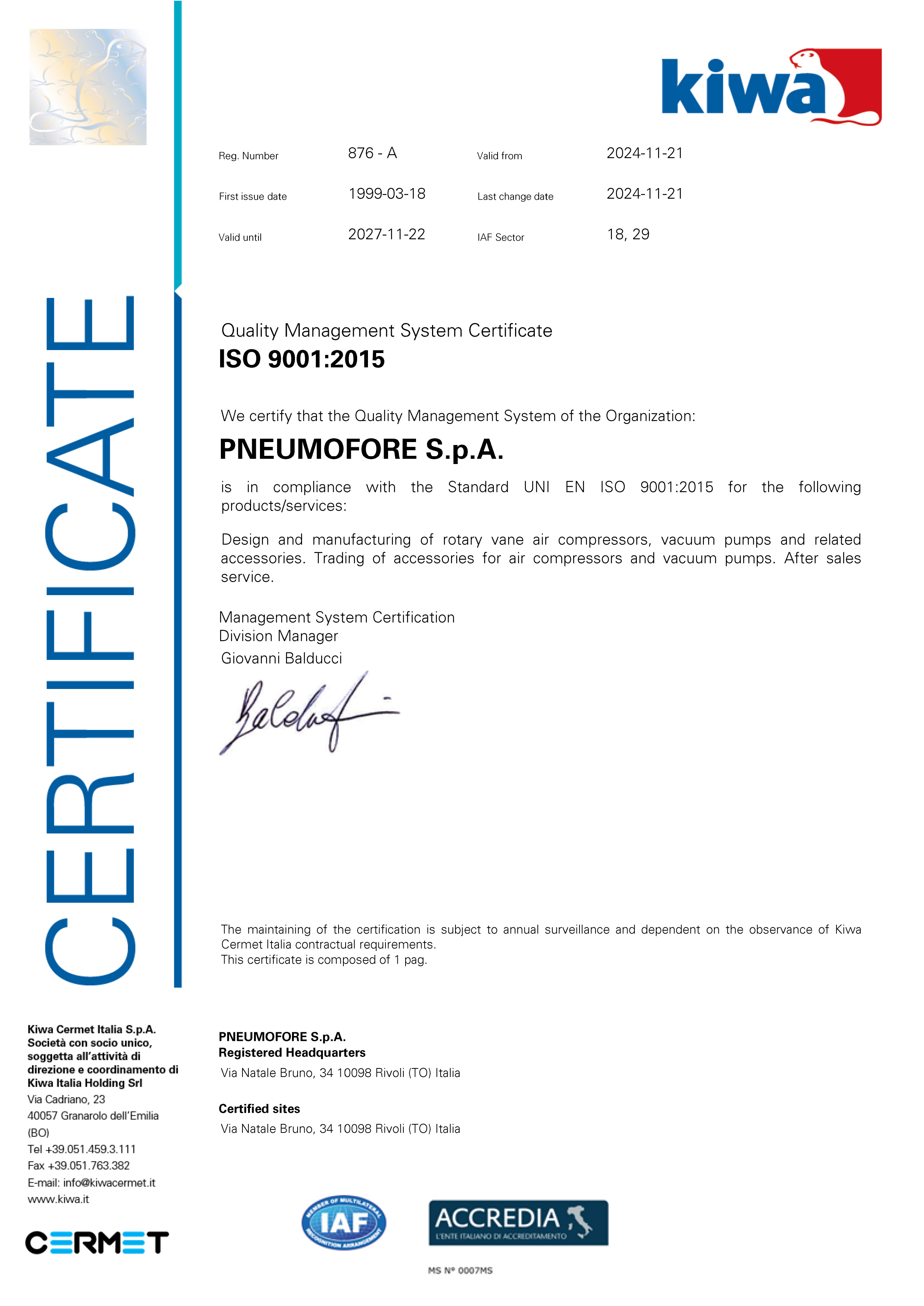 And finally, Pneumofore’s own manufacturing process complies since 2002 with the strict ISO 14001:2015 Environmental Quality Certification. The company strives to reduce waste and use resources as efficiently as possible across the board, from compact documentation with minimal paper to high-efficiency fleet vehicles.
And finally, Pneumofore’s own manufacturing process complies since 2002 with the strict ISO 14001:2015 Environmental Quality Certification. The company strives to reduce waste and use resources as efficiently as possible across the board, from compact documentation with minimal paper to high-efficiency fleet vehicles.
From cradle to cradle, Pneumofore systems reduce environmental impact across multiple levels: less material and labor spent on installation, no water use, less resources spent on spare parts and repairs, double or more the longevity than other systems – and therefore less disposal and replacement impact – but most crucially, minimal consumption of operating energy, which, over the machine’s lifetime, makes the largest contribution towards reducing CO2 emissions.



